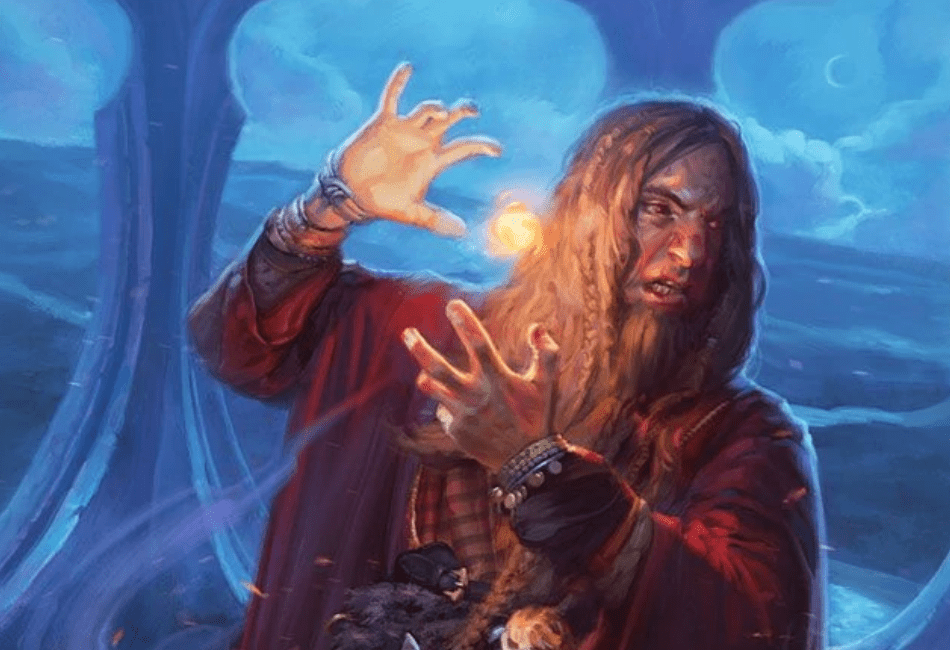Fireballs are the person-portable or demi-human-portable, heavy artillery of the D&D world. They are not a factor when you first start as a 1st level character. The problem is that when your character reaches higher levels, they will be used, if not abused, again and again.
Players need to know about them, and DMs need to know how to deal with them. Maybe there is a reason why Hamlet did not Fireball his evil uncle in the first act of Shakespeare’s play. Let’s begin our Fireball 5e guide by looking at what exactly a fireball is.
What is Fireball?

Fireball is a third-level evocation spell. Its name is pretty self-descriptive. Fireball is a streak of flame that the caster can deliver at enemies to explode into a ball of fire and do heavy damage.
Depending on how close your enemies are standing together, you can damage a gaggle of enemies with just one Fireball.
Taken from Players Handbook (PHB), p 241, here are the stats:
- Fireball: 3rd level evocation
- Casting Time: 1 action
- Range: 150 feet
- Target: a point you choose within range
- Components: V S M (a tiny ball of bat guano or sulfur)
- Duration: Instantaneous
- Classes: Sorcerer, Wizard
- Damage 8d6 plus 1d6 for each spell slot level above 3rd
- Area of Effect: 20-foot radius sphere
Casting time means that you have to use one complete action to cast the spell within your turn. This means if you only get one action per turn, you cannot throw a dagger and then cast your spell in the same turn.
Range and target mean that you can designate a target anywhere up to 150 feet. Example:
I have some orcs 30 feet in front of me and some friends 50 feet behind the orcs. In this case, I have the option to use a short-range fireball of only 50 feet and not have to worry about injuring my friends. Nobody likes a wizard who bakes his buddies with friendly fire!
Components are what you need to cast a spell. V= verbal S= Somatic M= material verbal means you must be able to say some incantation like “Abradacadra!”. Somatic means hand gestures like making shapes in the air with hands and fingers or getting ready to throw a baseball, or, in the case of Fireball, pointing a finger at the target.
Material means that, almost like a magic brew, your spell has ingredients that you need to have with you in order to cast the spell. Sometimes those ingredients, depending on the spell, get destroyed, sometimes not.
The duration means it does its damage at the time of impact but not afterward. If the targeted creatures are standing in an area filled with combustibles when they get hit, like a wheat field or barn full of hay, they might suffer burn damage from combustibles and maybe have the smoke affect their breathing.
Damage is how you kill enemies in the game and how enemies can kill you. 8d6 damage means the caster gets to roll a six-sided die eight times to calculate total damage, meaning that the damage is 8-48 points or half that if the victim makes a successful saving throw on a twenty-sided die for Dexterity. If you are a high-level spell caster and are capable of casting Fireball at a level higher than 3rd level, you can increase the damage by one six-sided die per additional spell slot.
How to use Fireball
If your character has access to Fireball, it means that your character is of the correct class and level. Your character, if a wizard, has also had time to copy the spell in his or her spellbook and memorize that spell for the day, at the beginning of the day, before continuing with the adventure and winding up in the combat that has resulted from this encounter.
Sorcerers don’t need to prepare their spells in advance. They either know Fireball, or they don’t.
Assuming you have Fireball in your arsenal and have prepared it for the day, make sure that there are no problems before you waste a turn or action attempting your spell.
- You need a full action within your turn to dedicate entirely to casting the spell. If you are doing something else, like running or using a weapon, and your character does not have additional actions within his or her turn, you cannot cast your spell at the same time.
- Fireball is a ranged attack, so if you want to attack without a disadvantage, you need to have some type of protection to make sure that no able-bodied enemies can get within 5 feet of you.
- The components of the spell are VSM, so the caster needs to be able to talk, use his or her hands, and have access to the materials needed for the spell, sulfur, or bat guano. More on this later.
- You need to pick a target within range. Considering that the area of effect is a sphere 20 feet in diameter, any target closer than 20 feet would result in you fireballing yourself and taking damage.
- You need to inform the DM (dungeon master) that you intend to cast Fireball for your activities during that turn.
How does Fireball work?
Once you have announced your intentions and the DM has cleared your Fireball spell, the DM’s description of the effect would run something like the narrative below. To give context, we will say that your character is a wizard targeting a platoon of orcs 100 feet away with their lieutenant at the center of the blast area.
You point your finger, and a jet of flame shoots from your finger towards the orcs. The orcs have time to stare in awe and horror but not do much else. (DM rolls the dice) The lieutenant grabs one of his soldiers and uses him as a living shield.
The jet of flame makes contact with the living-orc-shield being used by the lieutenant, and there is an explosion of fire and a brief chorus of dying orcs.
The explosion was just a moment, and you can now see within the blast area. The field is now burning and is littered with the bodies of dead orcs. It appears that the entire platoon of orcs was caught within the blast area.
To compare a fireball to modern military weapons, it’s a portable missile that detonates on target. What it is not is a cannonball that is the same size from point-of-origin to point-of-detonation. Until your Fireball reaches its point of detonation, it’s simply a streak of flame. Whether or not that streak of flame can damage anyone in its path is up to the DM.
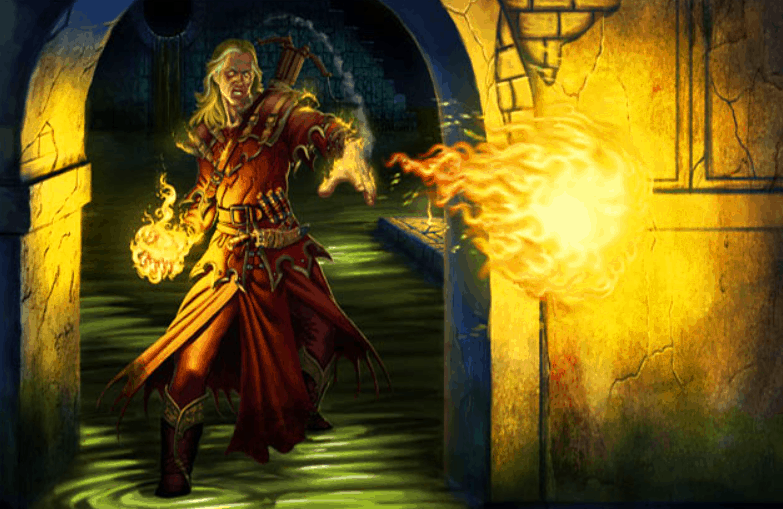
*Notice that the DM’s narrative above states that “It appears that the entire platoon of orcs was caught within the blast area.” Depending on how many hit points the orc lieutenant has, it’ possible for him to have survived a fireball, especially if the saving throw had been made.
Using another orc as a shield would never offer full protection from the blast but could reduce some of the damage. Even a half-damage fireball would be enough to kill a low-level monster like a common orc soldier, but it’s possible that a higher-level orc, like an orc lieutenant, could survive, although barely.
For game purposes, the center-of-the-blast and the perimeter-of-the-blast are equal for damage purposes. This is because combat encounters within a gaming session with multiple players tend to take long enough without being bogged down in “fireball math.”
Also, notice that for only a moment, the player could not see much of what was happening inside the fireball blast area. That represents the duration of the spell, which was instantaneous and, therefore, “a moment.”
Also, notice that the field is burning. That is because Fireball can ignite any flammable objects within the blast area. Just because the explosion is over doesn’t mean that the burning caused by damage has stopped. If the orc lieutenant is still alive and “playing possum,” he cannot stay in that burning field for long without being burnt or suffocating from smoke damage.
Likewise, if the wizard and their party want to engage in their favorite pastime, looting dead bodies, they need to first put out the fire. Depending on how tall the grass is in this field, the orc lieutenant may or may not have time to crawl away during the party’s fire-fighting activities.
At higher levels, you can use your spell slots to make your 3rd level Fireball Spell a 4th level spell or higher, adding damage to your Fireball.
Who can use Fireball?
Wizards and sorcerers, as per Player’s Handbook. Those are the classes that can cast Fireball in the 5th edition. Druids used to be able to cast Fireball in previous editions, but now they cannot. Bards can take the spell not on their spell list, but through their Magical Secrets feature, at 10th level or higher.
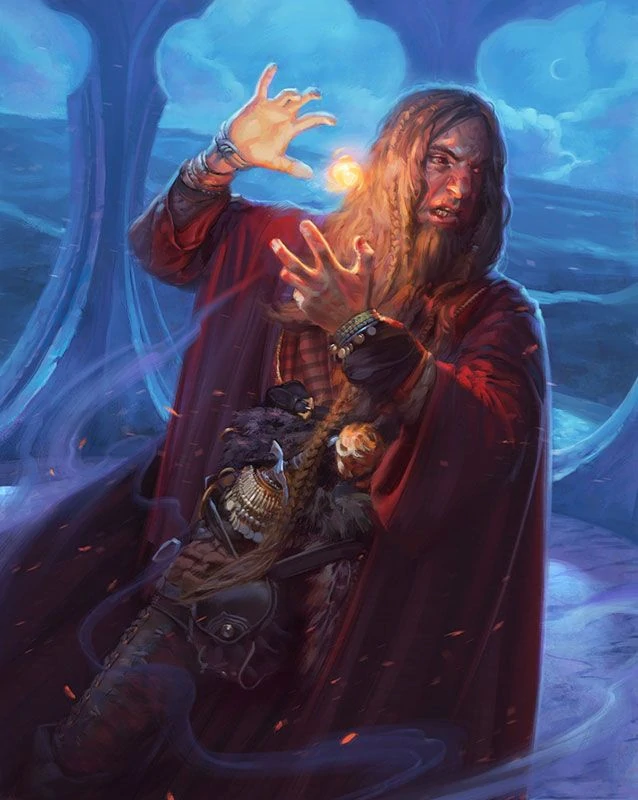
There are subclasses that can use Fireball, however, and this is where it gets complicated. There are 28 subclasses for the 5th edition of Player’s Handbook alone. The game becomes even more complicated when you add in other 5th edition sources such as:
- Dungeon Master’s Guide
- Tasha’s Cauldron of Everything
- Sword Coast Adventurer’s Guide
- Xanathar’s Guide to Everything
It is beyond the scope of this article to explore every subclass in every 5e D&D accessory that is out there. Some popular subclasses that can use Fireball, however, include but are not limited to the following:
- Eldritch Knight (Fighter)
- Pact of Fiend Warlock (Warlock)
- Light Domain Cleric (Cleric)
- Arcane Trickster (Rogue)
- Artillerist Artificer (Artificer)
Items
As per the Dungeon Master’s Guide, there are three items, not including spellcasting items such as scrolls and spell storing rings, that enable the user to cast fireballs:
| Item | Charges | Weight (lbs.) | Rarity |
|---|---|---|---|
| Necklace of Fireballs | NA(beads) | 1 | Rare |
| Wand of Fireballs | 7 | 1 | Rare |
| Staff of Fire | 3 | 4 | Very Rare |
| Staff of the Magi | 7 | 4 | Legendary |
Regarding the Necklace of Fireballs, charges don’t apply because you create the Fireball by throwing a bead. Each necklace has a limited number of beads (1d6 +3 beads). When you throw a bead, you create a fireball, but then you permanently lose one bead. When you run out of beads, you run out of fireballs.
You also have the option to throw multiple beads in a single action to create a more powerful fireball. Each additional bead adds 1d6 damage to the Fireball.
The range for Necklace of Fireballs, however, is decreased from 150 feet to 60 feet because you must throw the beads. If the player’s character has an exceptionally good or exceptionally bad throwing arm, the DM may choose to adjust this range for that character.
Regarding the Staff of the Magi, each Fireball is not a 3rd level fireball but a 7th level fireball! Therefore, instead of doing 8-48 points of damage, you do 12-72 points of damage. In addition to doing more damage than a Staff of Fire, Staff of the Magi has more charges for the fireball feature. So, whatever you do, don’t lend your Staff of the Magi out to anyone, not even a lawful good wizard, or you’ll never see that piece of wood again!
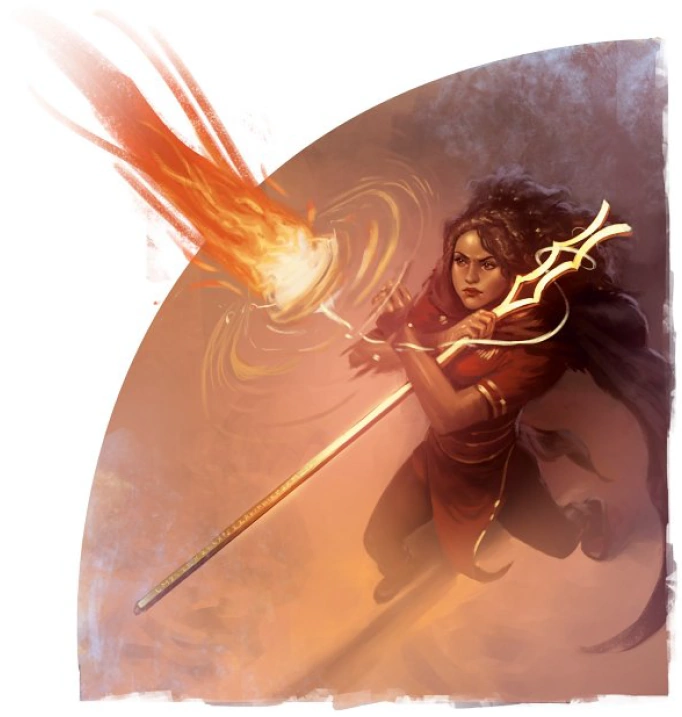
Any item that allows you to cast spells, like a Ring of Spell Storing or a spell scroll, could include Fireball as one of its spells. While a scroll may require you to speak, it doesn’t require you to carry bat guano around with you all time.
Is Fireball good?
Does a bear defecate in the woods? What a question!
It’s one of the most popular combat spells in the game, and it’s one of the first spells your wizard should seek to acquire.
Remember, however, that there are many creatures with resistance and immunity to fire damage. In the Monster Manual alone, the demographics are as follows:
- 39 with resistance to fire damage
- 42 with immunity to fire damage
So, if you are fighting white dragons and ice salamanders, fireballs are the best, but you are more likely to encounter fire-resistant or fire-immune creatures.
This means that Fireball is great to have, but your high-level wizard or sorcerer better have another trick up his or her sleeve when a red dragon or an efreeti wearing a loincloth shows up!
Fireball
When do you use Fireball?
When that snotty paladin in the gleaming plate mail says something about your mother… Fireball!
When that greedy merchant drives the price of long swords up by 20%… Fireball!
When you see a lone kobold limping from an arterial bleed in his leg while desperately clutching a broken dagger… Fireball!
Just kidding, folks. Fireballs are a great addition to the game when used in moderation. It’s great to have some heavy-damage spells in your party, and it’s great to watch monsters get easily vaporized, sometimes.
The key is that Fireball, like all spells, is just one of many problem-solving tools. If you rely too heavily on just one tool, your development as a player is stymied. Sooner or later, players will just have to learn that they cannot Fireball their way out of every problem.
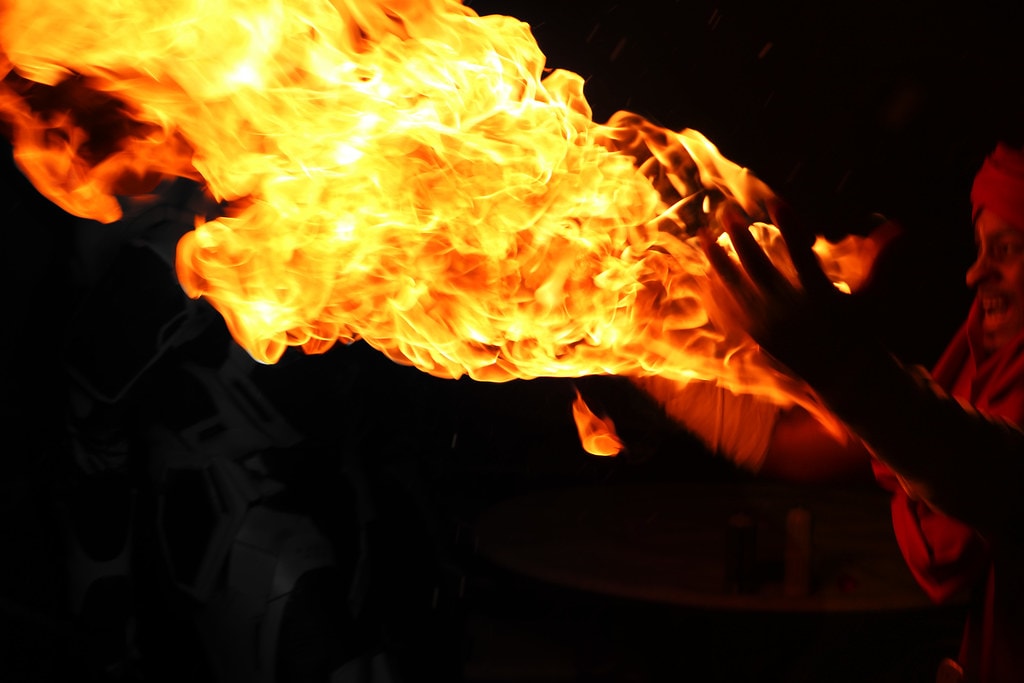
If a player has Fireball, that player is not a 1st level character, and they should know better. For someone who has just acquired 3rd level spells, fireballs will be in limited supply and will only be renewable after a long rest. Like Fireball, long rests taken specifically to renew spells can also be abused and lead to some not-too-challenging and very boring sessions.
Any DM who allows continuous Fireball abuse and long rest abuse to go unchecked has to take responsibility. If you don’t admit there is a problem, we cannot help you…
If you want to see a fun example of both Fireball abuse and long rest abuse, please check this link from Deerstalker Pictures.
This is going to sound like a public service announcement, but I would suggest that DMs have a Fireball conversation with characters just before they achieve 3rd level spell use. As you will see in the FAQs below, there is a myriad of what-ifs that can pop with Fireballs, and it’s better to work out that problem before the lives of imaginary characters are on the line in actual RPG combat.
A blast-everything-that-moves campaign is fine, providing both the players and the DM agree on that, but most would op for a campaign balanced with good role-playing and good problem-solving. Rather than wait for players to screw up and punish them with a cleric using silence 15-foot radius on the party’s wizard while an archer fills the spellcaster up like a pin cushion, it would be better to simply explain to the players in advance what kind of campaign balance is desired beforehand. Then, if they rebel, let the arrows fly…
FAQs
Question: What happens to creatures in the path of my Fireball but not within 20 feet of my designated target?
Answer: Things were different with 1e fireballs, such as the one depicted on the iconic Erol Otus artwork depicting a magic user poised to vaporize a green dragon with an actual green ball of fire in her hand. That type of Fireball was an increasingly expanding cannonball of fire, capable of cooking everything in its path from the point of origin to point-of-detonation. It had no backblast and was great for clearing a tunnel full of bunched-up mind-flayers leading a goblin army.
5e fireballs function more like modern military missiles in that they arm themselves on detonation. Therefore, something standing in the path of the streak of flame shooting out of your finger but out of range of the detonation is subject to damage from the flame, not the detonation. It’s up to the DM to determine whether obstacles are damaged by the flame, whether the flame harmlessly passes through them, or whether obstacles prevent the streak of flame from reaching its target, preventing its detonation.
If the lieutenant orc in the example above, however, places his living orc shield at the approximate point of detonation while standing 1 foot back himself, then the lieutenant is no longer exactly at the point of detonation, and the unfortunate living orc is. In this DM’s humble opinion, the callous orc lieutenant would be allowed a Dexterity saving throw to halve the fireball damage for himself.
Question: Do fireballs have backblast?
Answer: That depends on the DM, but normally, yes. Fireballs are not toys but some of the most popular magical ordnance in the game. Fire, by its very nature, is wild and untamed and can turn on its master at any time.
If you are outdoors, you and your friends are safe from the fireball blast, provided that you are all at least 20 feet away from the point of detonation. Some DMs might argue that the spell itself does not affect the caster since the spell is a streak of flame which does not harm the caster. Other DMs and I would argue that while the streak itself does not harm the caster, the detonation of that streak can harm the caster.
The moral? Before fireballing at close quarters, please consult your local DM.
If existing and well-received RPG fiction can set a precedent, R.A. Salvatore’s Homeland has a Drow wizard, Alton DeVir, forced to detonate a fireball at close quarters to save himself from a horde of hostile spiders. Alton is injured, and his clothes are destroyed.
Please note that Salvatore only dealt with 1e D&D and publicly admits to not being 5e guy, and 5e fireball would not have damaged Alton’s clothes. Please also note that Salvatore is a verified GOAT for RPG writers, and questioning Salvatorian dogma will result in the immediate deduction of 1 level of experience from your player character!
Question: What happens when I use Fireball underground or indoors?
Answer: This also depends on the DM. I would argue that if there is a backblast, the area of effect could be magnified if the concussive force of the blast is confined in some directions and not others. Therefore, if you detonate a fireball inside a narrow tunnel or hallway, both the area of effect and the backblast would increase considerably depending on how narrow the tunnel or hallway is. The range of the backblast can be longer than the maximum range of the spell, 150 feet.
In gaming terms, the danger is that this can lead to a lot of fireball math, which can slow down your game tremendously. The solution is to make sure that there is a trust-based relationship between the DM and the players. The players should trust that the DM is not, pun intended, out to burn them.
If the players have what most people consider reasonable backblast protection, then the DM would be expected to honor that without everyone having to break out paper, pencil, and calculator. Likewise, if one of the players happens to be a firefighter or ordnance expert in real life, and they say that their character has sufficient backblast protection from a 20 by 20-foot Fireball, the DM should trust that expert opinion and not assume that the player is lying just to cook a couple of extra orcs.
Question: Can natural barriers act as protection against fireballs?
Answer: I would say just about anything you throw up in front of you would offer partial protection, but most things would not offer complete protection.
The first question-to-the-question would be,
“Is the barrier between you and the blast, or is it between you and the streak of flame en route to its point of detonation?”
If it’s the former, just about everything short of shields and shield phalanxes would offer some reduction of damage: battlements, corners, berms, people, trees, etc. It would be at the DM’s discretion to decide how much damage is reduced or to simply have the character role a saving throw and consider them hiding behind that protection a successful save.
As for the latter, barriers between the steak of flame and the point of detonation, anything that can delay flames for a few seconds will do the trick, including a good shield or a well-directed flat a sword. Of course, it takes superior timing to do that.
A character of average perception and timing would be incapable of detecting and intercepting a fireball streak before detonation, but a high-level Drow ranger with 20 Dexterity like Drizzt Do’Urden might be able to pull it off. If the shield is the point-of-detonation, intercepting will not work.
Question: What happens to the equipment carried by people/creatures caught within my Fireball?
Answer: It was different for 1e fireballs, but for 5e fireballs, all equipment is undamaged as per the spell description in the Player’s Handbook:
“It ignites flammable objects in the area that aren’t being worn or carried.”
Aren’t means that this magically created fire does not act like modern incendiary ordnance in regarding scrolls, arrows, and other cool treasure.
That makes it a lot easier to loot the bodies! That also means that wizards that are lucky enough to survive a fireball blast, both friendly and hostile, can’t be taken out of the fight simply because the spell-casting material components on their pouches have been destroyed by a fireball.
Question: Can I use Fireball in the rain?
Answer: I think you can use Fireball in a drizzle but not heavy rain. If you attempt Fireball in a heavy rain, your bat guano would turn into muddy soup and the spell will not be completed. However, if a creative party member wants to hold a make-shift umbrella over your bat guano while the orcish archers are firing their arrows at the two of you…
Likewise, any good soaking, such as falling out of a boat or swimming across an underground lake, would render your bat guano temporarily or even permanently unusable.
Of course, the material components of Fireball are bat guano or sulfur. Wet sulfur might not be much of a problem. Unless your player specifically asks for sulfur, always assume the character has opted for bat guano. Players casting at 3rd level should know better and depriving their characters of bat guano will make everyone miss out on all the fun. (see below)
Question: What are the consequences of carrying around bat guano or sulfur in my pouch on a day-to-day basis?
Answer: In D&D terms, sulfur does not smell. The rotten egg odor associated with sulfur comes from the compound hydrogen sulfide, not sulfur in its pure form.
Bat guano, on the other hand, stinks. It smells so bad that in large quantities it can make people acquire illnesses and diseases. Fireball does not require large quantities of bat guano for a small ball, but the guano is stored and carried for long periods through environments of various humidity and temperatures.
Therefore, when your wizard enters the local tavern and attempts to hit on that attractive Elven archer, there may be a guano problem. Any time your wizard has to roll a charisma check, guano and other forms of wizard odor can be a factor. The same goes for stealth checks.
I cannot emphasize this point enough. Fireballs are not for 1st level characters and, therefore, not for beginner players! If players want to store their bat guano and other components in an air-tight, water-tight, odorless way, the onus is on them, not the DM! They have to come up with a solution and communicate it to the DM before starting the adventure. No second chances! Second chances are for first-level characters only! Why deprive them of the role-playing fun that comes with a bat guano faux pas?
If they don’t communicate a solution, the DM should assume the following for all material components held by wizards and other spell casters:
Components are stored in a system of pouches and sacs attached to the belt, like a utility belt, for easy retrieval and use. If the wearer is turned upside down, components will not fall out; if turned upside down and shaken, components will fall out.
If the character casts in ranged combat, the components probably will not fall out; if the character winds up in a wrestling match with a hobgoblin, components will start to fall out and delicate items can get broken.
The pouches, unless specified otherwise, are neither air-tight not water-tight, and such items in a medieval-styled campaign would be both expensive and difficult-to-acquire. Perishable items, unless replaced, will spoil over their natural course of time. Finally, even though fireball blasts will not damage components, regular fires can and so will the regular fires caused by other items ignited by fireballs.
Conclusion
Many possibilities have been explored with Fireballs in this article, but there are good reasons for that.
- Fireball, over the decades, has been one of the most powerful and popular spells in the game.
- Fireball abuse is a thing. Don’t wait, DMs! Talk to your players about it today.
Finally, what separates an offline RPG from an online RPG are the limitless possibilities. In video games, “if it’s not in the code, you just can’t do it”. Your outside-the-box thinking is limited by whoever has coded the algorithm.
In offline RPGs, we still have a machine that computers cannot yet compete with, the human mind. If the players think of a solution that has not occurred to the DM, the DM can adapt in ways that a video cannot.
Hopefully, this article has shown some of the possibilities and many of the what-ifs that can come up. Even if it’s only a game, a creative, coordinated party is a great thing to see, and a good DM should try to keep up.
- Perform Bewitching 5e Guide - October 1, 2022
- Inspiring Leader 5e Guide - September 20, 2022
- Scrying 5e Guide - September 19, 2022

